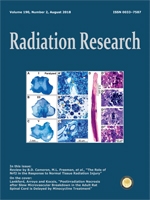As one of the most crucial epidermal growth factor receptor (EGFR) variants, EGFRvIII can be detected in various tumors but rarely in normal tissues, making it an ideal target for prognosis, diagnosis or immune therapy. The recently developed anti-EGFRvIII monoclonal antibody (mAb), 4G1, has been validated as a promising molecular probe to detect EGFRvIII expression in tumors by single-photon emission computed tomography/computed tomography imaging. To overcome shortcomings associated with the whole antibody, including long-term retention, circulation and enhanced permeability and retention effects, the Fab fragment of 4G1 (Fab-4G1) was generated, labeled with 131I and evaluated in vitro and in vivo to test its potential application in molecular imaging. Whole mAb 4G1 was first digested by immobilized ficin and then purified through a protein A column to generate the Fab fragment, Fab-4G1. Next, SDS-PAGE, Western blot, indirect fluorescence assay, flow cytometry and enzyme-linked immunosorbent assay were performed to verify molecular weight, specificity and affinity of Fab-4G1. Finally, biodistribution planar gamma imaging was performed by injection of 131I-labeled Fab-4G1 into xenografted EGFRvIII-overexpressed tumors in nude mice. Parallel studies were also performed with intact 4G1. The molecular weight of Fab was determined to be 35–40 kDa by SDS-PAGE. In vitro tests confirmed both intact 4G1 and Fab-4G1 specifically bound EGFRvIII but not wild-type EGFR, and Fab-4G1 showed decreased affinity. Compared to 131I-4G1, biodistribution studies showed lower tumor uptake of 131I-Fab-4G1 at all time points, but much faster elimination in all normal organs. As for planar gamma imaging, 131I-Fab-4G1 and 31I-4G1 showed similar imaging effect at 2 h after injection of tracer, while 131I-Fab-4G1 was eliminated more quickly with time, suggesting radiolabeled Fab-4G1 could be potentially used for imaging of EGFRvIII-positive tumors at early time points. Radiolabeled Fab-4G1 would be a promising nuclear probe for future clinical EGFRvIII tumor detection.
How to translate text using browser tools
31 May 2018
Imaging Potential Evaluation of Fab Derived from the Anti-EGFRvIII Monoclonal Antibody 4G1
Shen Jing,
Yujia He,
Yanqiong He,
Liang Wang,
Jianhua Jia,
Xiaomin Shan,
Shuang Liu,
Min Tang,
Zhiping Peng,
Xujie Liu
ACCESS THE FULL ARTICLE

Radiation Research
Vol. 190 • No. 2
August 2018
Vol. 190 • No. 2
August 2018




